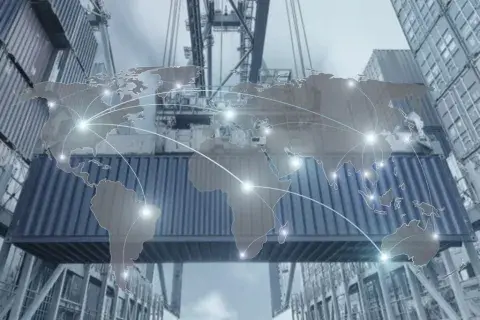It’s Time for the Evolution of Supply Chain: 4 Characteristics to Watch for With Supply Chain 2.0
The right product, at the right place, at the right time. The decades-old challenge of supply chain is now more difficult to solve than ever before. Globalization, market volatility, demanding consumers, vast amounts of data—it’s no wonder past strategies are failing to solve today’s mounting challenges. With complexity growing, an evolution of the supply chain needs to begin now. Not just to solve current problems, but to be better prepared for future ones. But how are companies going to be able to adapt? How are they going to take advantage of existing opportunities to capture market share, increasing brand loyalty and profitability? According to global services firm Accenture, the answer lies in the evolution of supply chain. It lies in Supply Chain 2.0! In the firm’s recent white paper, Supply Chain For a New Age, the authors, Mohammed Hajibashi and Ashoo Bhatti, map out a next generation supply chain blueprint. “Getting to the next generation of supply chain capabilities would require breaking down functional silos, redefining priorities, and building synchronized planning and fulfillment capabilities.” They describe the characteristics of Supply Chain 2.0 as:
- Rapid: Enhanced responsiveness; proactive prevention; last-mile postponement. Examples include demand sensing, automated KPI reporting real-time planning and execution, dynamic inventory replenishment, and a robotic workforce.
- Scalable: Maximum efficiency; organizational flexibility; highly-evolved operating models. Examples include reconfigurable supply networks, lightweight SDA, cloud-hosted optimization tools, and a digital products supply model.
- Intelligent: Actionable insights; automated execution; enhanced, accelerated innovation. Examples include predictive maintenance, predictive forecasting, integrated optimization, supply and price analytics, “what-if” scenario analysis, and cognitive computing.
- Connected: Real-time visibility; seamless integration; personalized experiences. Examples include connected infrastructure, ecosystem collaboration, transportation control tower, social product development, track and trace, and external data exploitation.
These are enabled by six core building blocks:
- Rapid and responsive consumer-driven supply chains
- An integrated operating model that breaks silos and provides connectivity
- Performance management that’s aligned across the organization
- Clear and differentiated supply chain segmentation strategies
- End-to-end supply chain collaboration within the organization and across external trading and service partners
- Digital capabilities and a technology platform able to support all of this
The transformation from current supply chain operating models to Supply Chain 2.0 isn’t simple. Supply chain strategies are at a crossroads, and not addressing today’s challenges will be an equation for losing revenue. Businesses need to recognize the urgency in moving forward. Because if they don’t, the pressure to adapt and survive will only continue to grow. The Supply Chain 2.0 framework can help companies profitably meet future demands. For a more detailed explanation of how, check out Accenture’s whitepaper, Supply Chain for a New Age.





Discussions
Leave a Reply